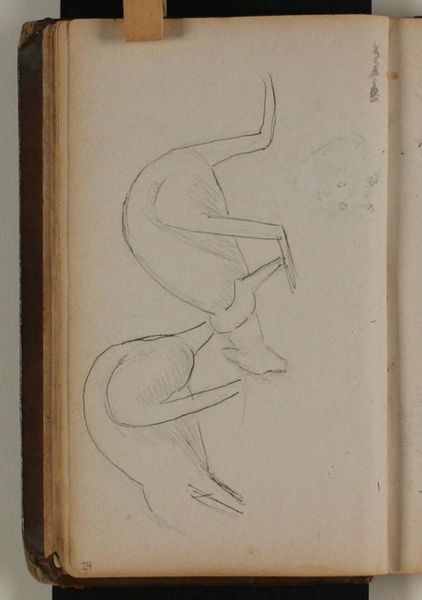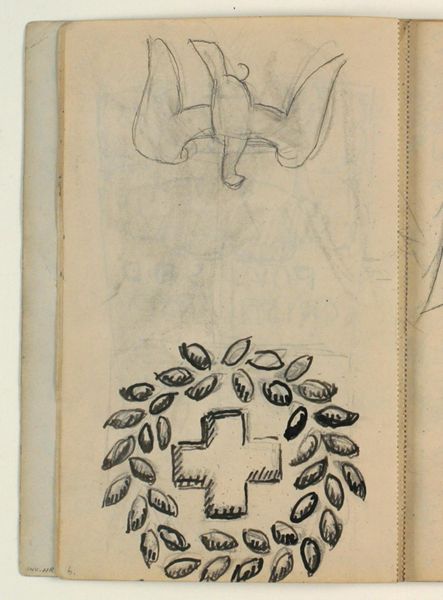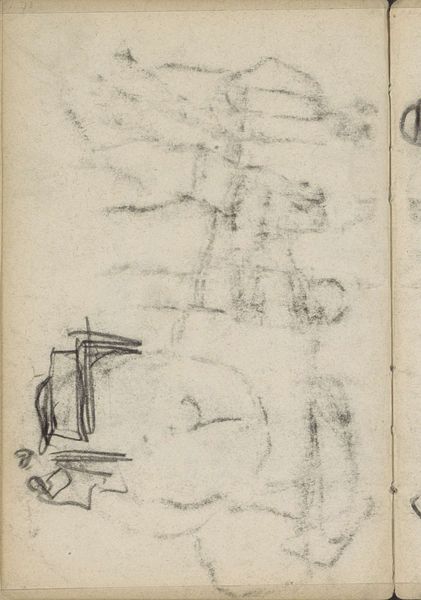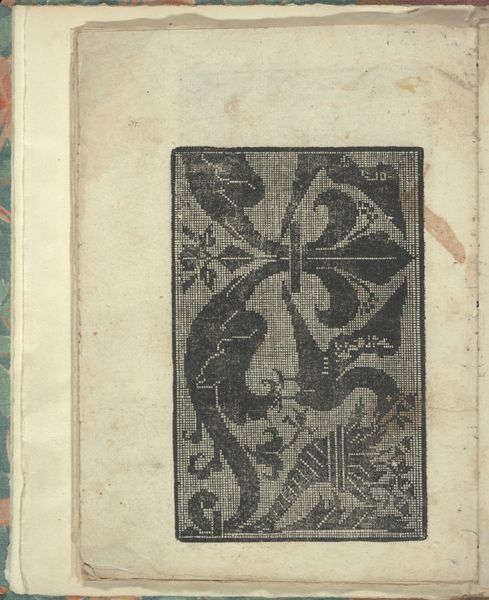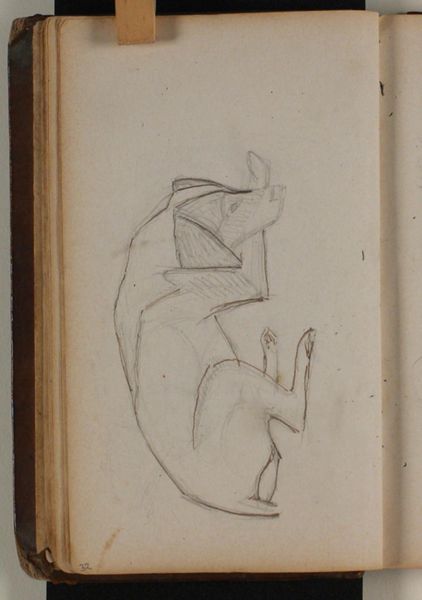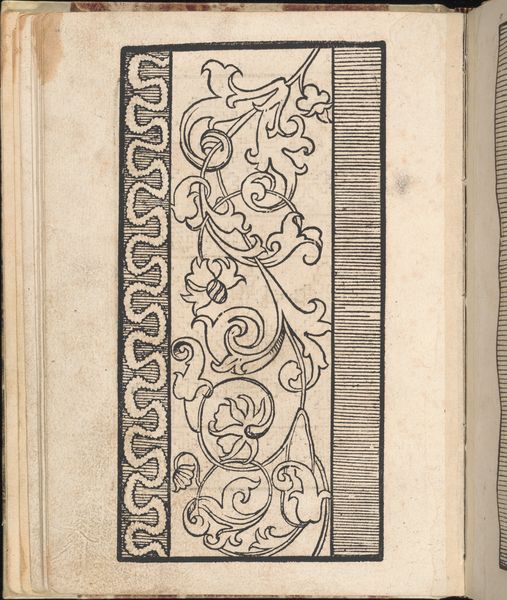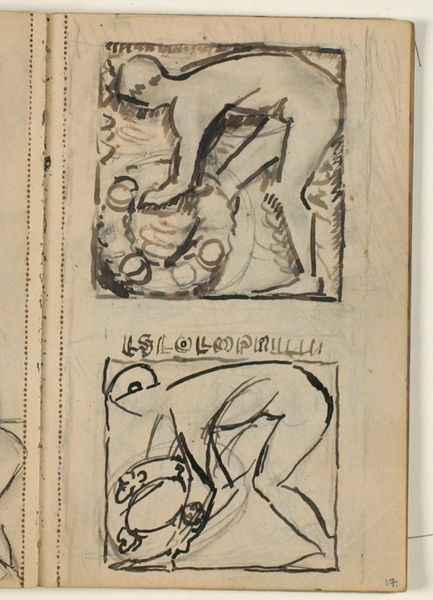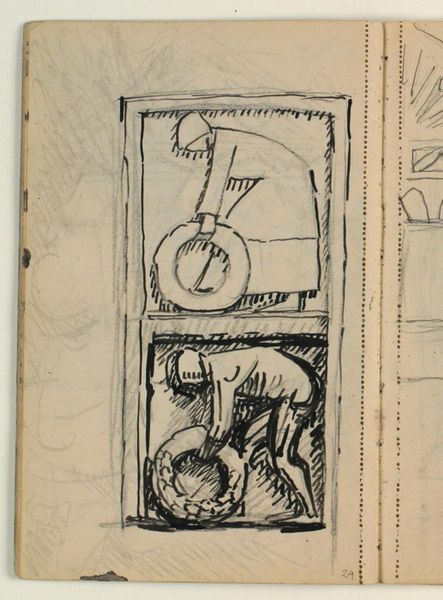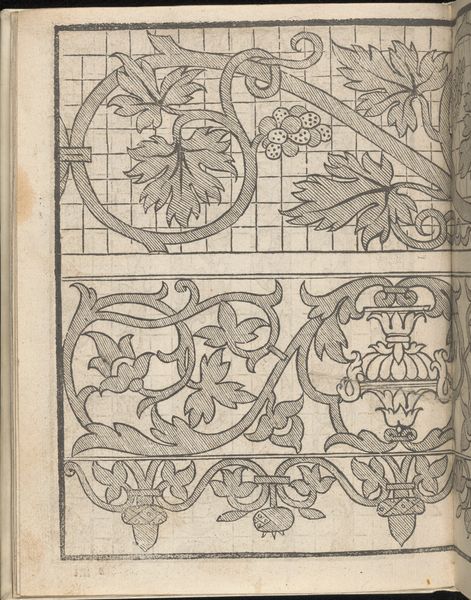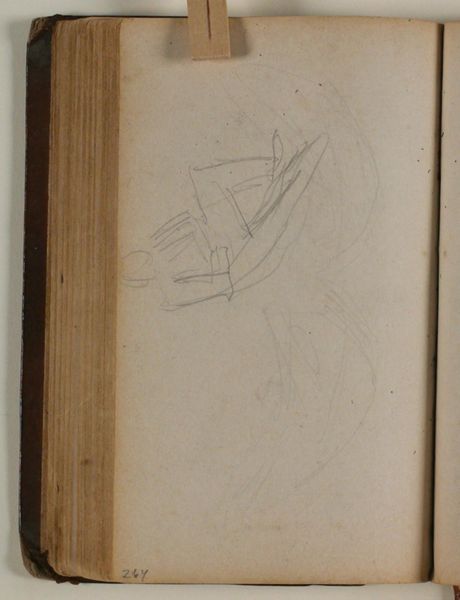
Udkast til Poul S. Christiansens gravmæle - fortsætter over på næste side (13) 1932 - 1935
0:00
0:00
drawing, paper, ink, charcoal
#
drawing
#
aged paper
#
toned paper
#
light pencil work
#
sketch book
#
hand drawn type
#
figuration
#
paper
#
personal sketchbook
#
ink
#
sketchwork
#
pen-ink sketch
#
sketchbook drawing
#
charcoal
#
sketchbook art
Curator: This intriguing sketch, penned by Niels Larsen Stevns between 1932 and 1935, is actually titled "Udkast til Poul S. Christiansens gravmæle," which translates to "Draft for Poul S. Christiansen's Gravestone." Editor: Wow, for a gravestone design, it feels surprisingly...gymnastic? That figure is really bending over backward. It gives me a slightly uneasy, unsettling feeling, as though it’s a very physically demanding take on mourning. Curator: It's interesting you say that. Gymnastics aside, that positioning, that near-circular pose of the human figure, also evokes the cyclical nature of life, death, and rebirth—an Ouroboros of sorts. The figure nearly encloses a separate circular form below, creating an undeniable echo. Editor: An Ouroboros of sorrow, maybe? I’m picking up the sense that that secondary circular form is almost...hollow? It brings to mind a wreath or, morbidly, the hole in the ground. The limited tonal range throws the symbolism into stark relief, amplifying this feeling. Curator: Indeed. Stevns was clearly working through ideas here; this comes from his personal sketchbook. That use of the figure within a confined square calls to mind memorial tablets or icons where the symbol and shape carry layered meanings over the ages. Editor: There's a beautiful awkwardness, a rawness, in its incompleteness. And it sits so starkly on the page. A reminder that even monumental ideas sometimes start as mere scratches, wrestling with darkness. It’s somehow comforting, in a strange way. It makes the huge finality of death feel a little less scary, a little more like something that is worked through in little pieces of ink on paper. Curator: A fittingly human portrayal for a monument meant to last, rendered temporary and fleeting on the page. I appreciate you highlighting its vulnerable genesis and the symbolism rooted in artistic traditions. Editor: Thanks. Thinking about death and finality makes the ephemeral nature of a simple sketch especially potent, wouldn't you say?
Comments
No comments
Be the first to comment and join the conversation on the ultimate creative platform.
